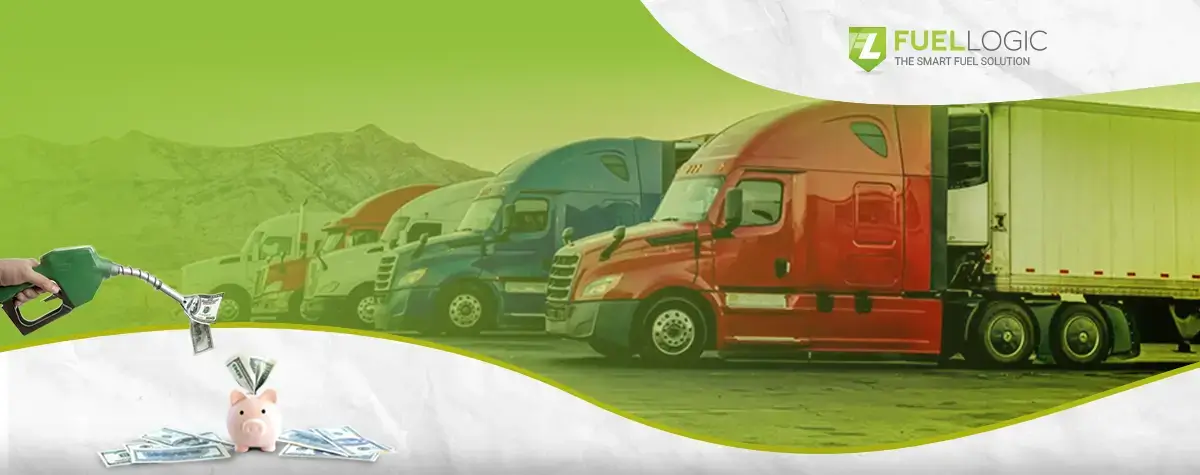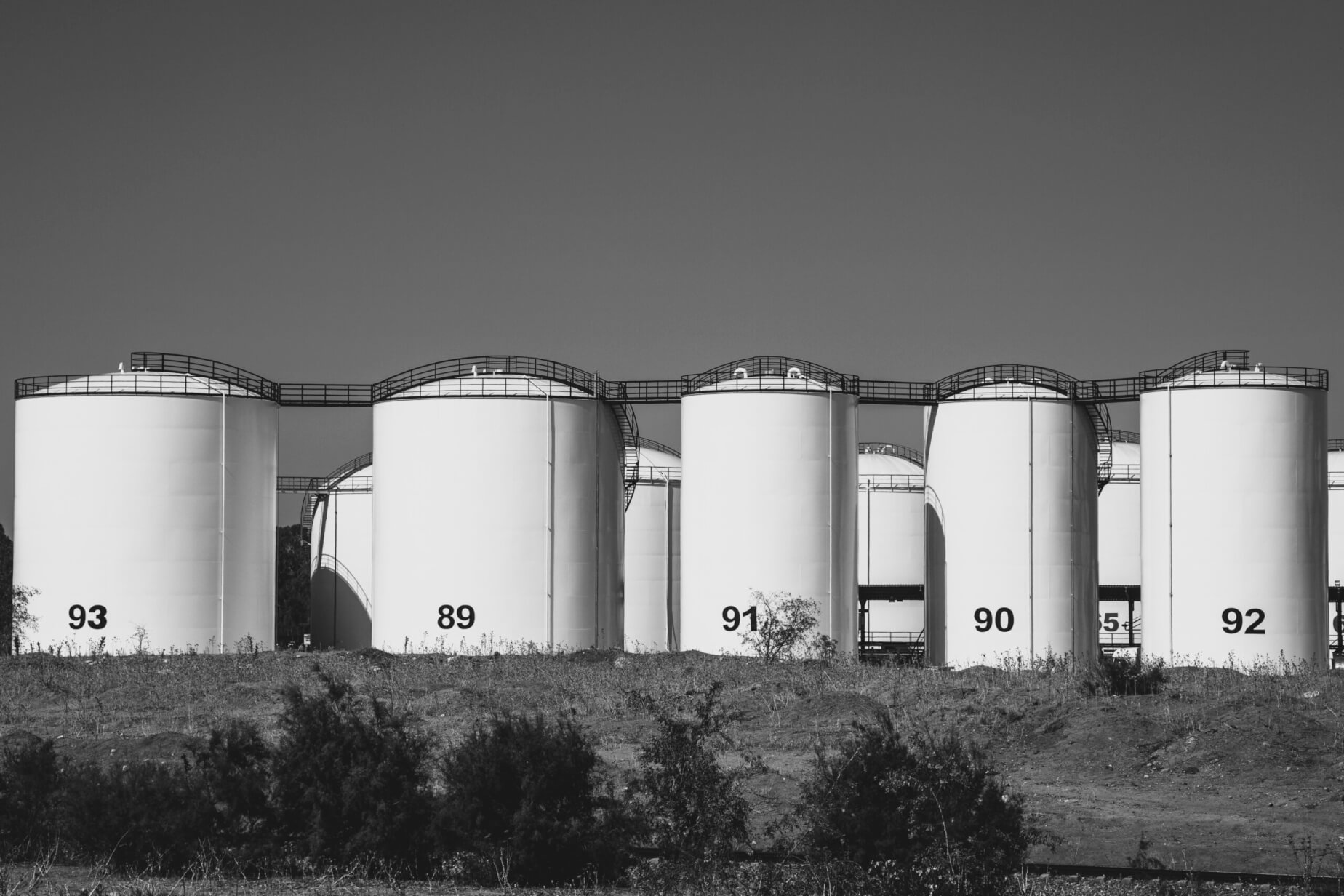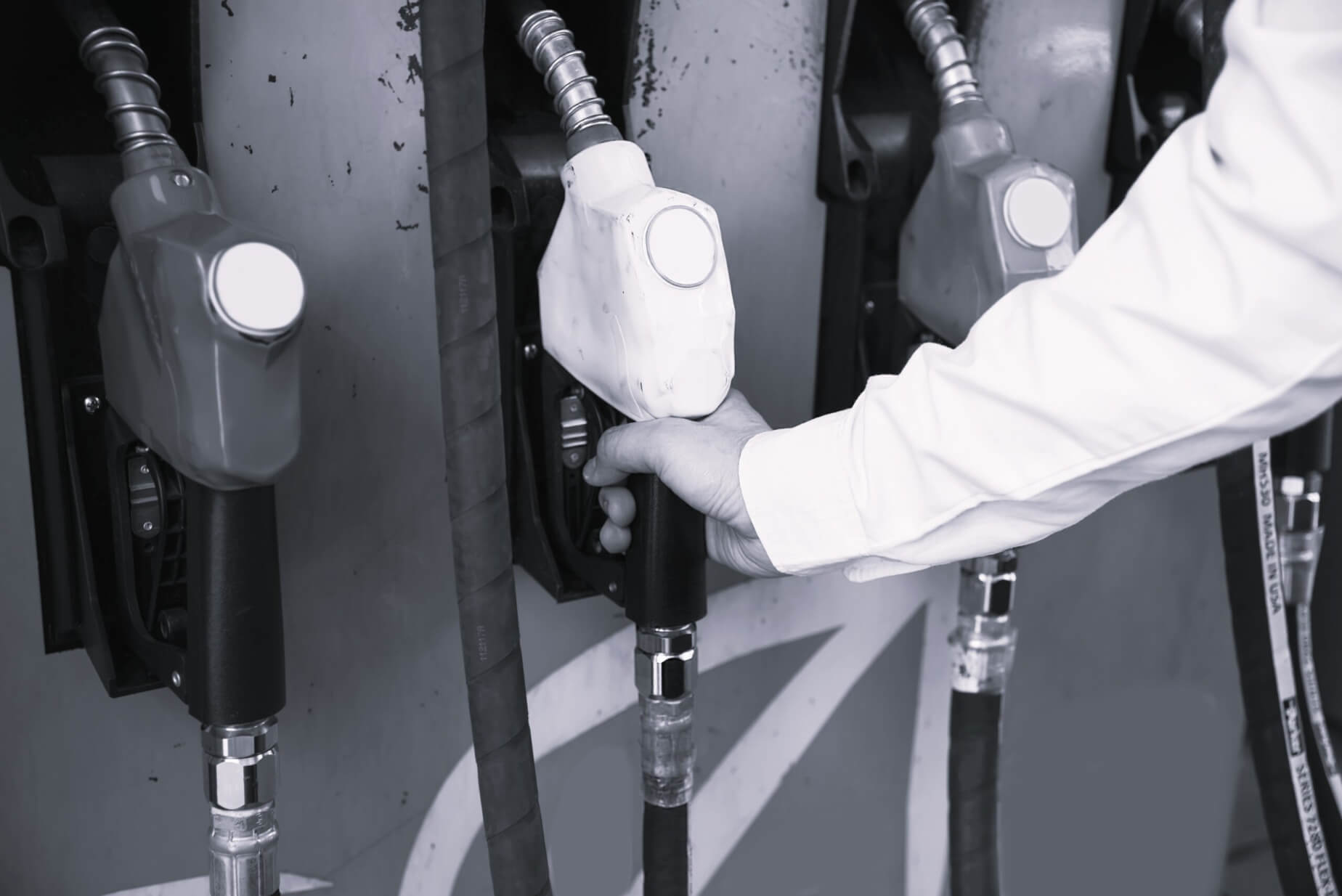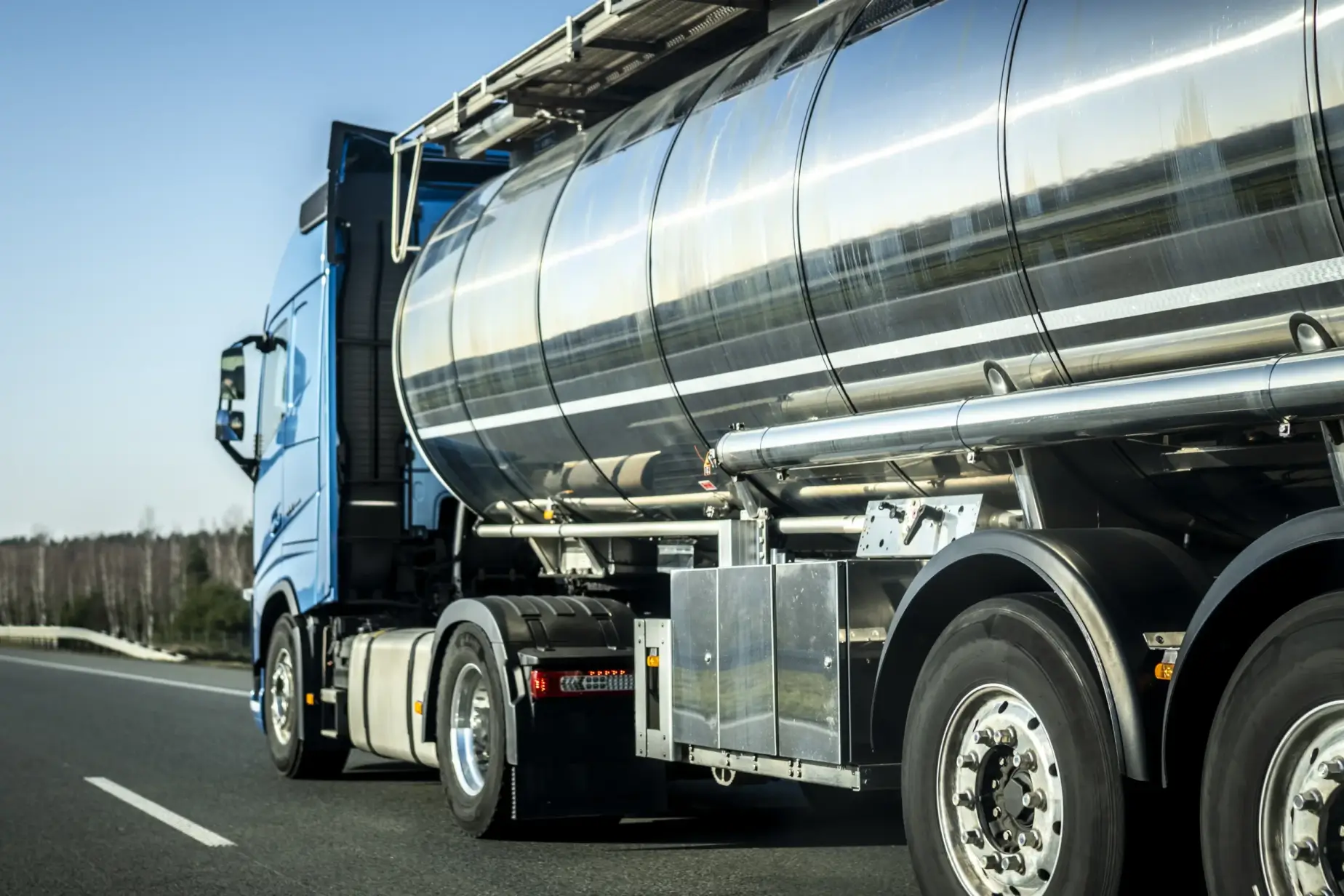Rising fleet fuel costs can be a significant challenge for businesses, impacting their bottom line and overall operational efficiency. As the price of fuel continues to fluctuate, organizations with a fleet of vehicles face the daunting task of managing and mitigating these escalating expenses. For businesses, trying to reduce fleet fuel costs will definitely improve financial liquidity.
According to a study, on average, fuel costs constitute a substantial portion of a fleet’s operational expenditures, often surpassing 30%. This financial burden not only causes a significant burden on fleet budgets but also affects the overall competitiveness of businesses in the market compounded by geopolitical strife, market instability, and the inherent volatility of fuel prices.
With the global landscape experiencing fluctuations in oil prices and environmental concerns pushing for sustainable practices, it becomes imperative for fleet managers to proactively address the challenge of rising fleet fuel costs.
In this article, we will explore effective ways on how to reduce fuel costs effectively without compromising the productivity and reliability of our operations. Let’s delve in!
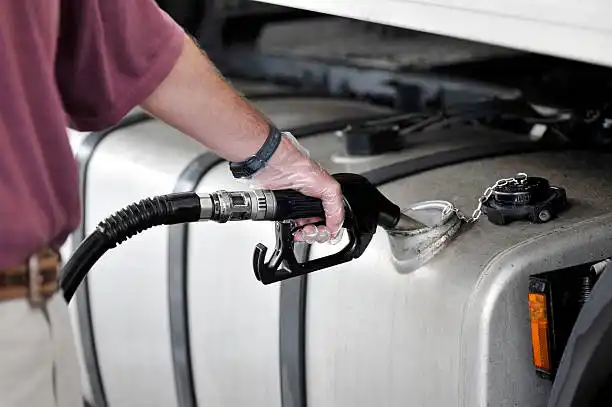
What Are Fuel Costs?
Fuel costs refer to the expenses associated with acquiring and using fuel, typically in the form of gasoline or diesel, for various purposes. These costs are a crucial component of the operational budget for businesses, as fuel is a necessity for a wide range of daily activities.
Fuel, in the form of energy, powers vehicles, machinery, equipment and equipment essential for transportation, manufacturing, and other operational functions. From powering delivery trucks to running generators, businesses rely on fuel to keep their operations running smoothly.
How To Calculate Fleet Fuel Costs?
In the realm of fleet management, understanding and accurately calculating fuel costs is crucial for maintaining a healthy bottom line. There are various methods available, each with its own set of advantages and drawbacks. In this guide, we’ll explore two primary approaches:
1. Manual Fuel Cost Computation
Calculating fuel costs manually involves a straightforward approach, where you track fuel consumption and prices to determine overall expenses. To do this, keep detailed records of fuel purchases, mileage, and fuel efficiency. The formula is simple:
Total Fuel Cost = Total Fuel Consumed × Fuel Price
Pros:
- Low upfront cost, as it only requires basic record-keeping.
- Allows for a hands-on understanding of individual vehicle fuel efficiency.
Cons:
- Prone to human error and data entry mistakes.
- Time-consuming and may become impractical for large fleets.
2. Use an Automated Solution
Employing GPS tracking or an integrated Vehicle Management System (VMS) automates the fuel cost calculation process. These technologies provide real-time data on fuel consumption, vehicle location, and maintenance needs.
Pros:
- Accuracy is enhanced with automated data collection.
- Provides insights into driver behavior and vehicle performance.
- Suitable for large fleets, saving time and reducing the risk of errors.
Cons:
- Initial investment in technology may be high.
- Requires training for staff to effectively utilize the automated system.

Best Strategies to Reduce Fleet Fuel Costs
Fuel costs wield a significant impact on fleet management, often making up a substantial chunk of the budget. The money spent on fuel directly affects the overall profitability of a fleet. As fuel prices fluctuate due to various factors like geopolitical events and market dynamics, fleet managers find themselves navigating a complex terrain where every penny saved on fuel can contribute significantly to the bottom line.
Therefore, efficiently managing fleet fuel costs is a perpetual challenge, given the volatility of fuel prices and the unpredictable nature of the transportation industry. But how to reduce the fleet fuel costs? Well, to navigate this terrain effectively, let’s explore some easy and manageable methods to cut down on fuel costs:
1. Perform Regular Fleet Maintenance
Regular maintenance is like a superhero cape for your vehicles, ensuring they perform at their best. From routine oil changes and engine tune-ups to keeping tire pressures in check, address any issues promptly as well-maintained vehicles are more fuel-efficient. Moreover, consider incorporating mobile fleet fueling into your maintenance strategy. This innovative approach brings fuel directly to the fleet leading to reduce fleet costs, saving time, and ensuring vehicles are always ready to hit the road without unnecessary detours to refuel.
2. Avoid Unnecessary Engine Idling
Imagine your vehicle standing still, engine running, fuel being consumed without any movement. It’s like paying for a service we’re not using. That’s why discouraging unnecessary engine idling can be a game-changer. This is particularly evident at traditional gas stations, where idling is often the norm, resulting in hidden or intangible costs. Therefore, encourage your drivers to switch off the engine when parked or waiting for an extended period. It’s a small move that can lead to big savings.
By proactively maintaining our vehicles and curbing unnecessary engine idling, we’re not just cutting down on fuel costs but also optimizing your fleet for a more efficient and cost-effective journey. It’s a win-win for the environment and savings.
3. Optimize Routes by Choosing Smoother Roads
When it comes to navigating the roads, not all paths are created equal. The condition of the roads your fleet travels on can impact fuel efficiency more than you might think. Potholes, rough surfaces, and bumpy terrains can lead to increased fuel consumption as vehicles work harder to overcome these obstacles. Things can get trickier in the winter when fuel efficiency is at its lowest, but regardless of the weather, there are still baseline ideas on route selection that can save your business money.
Choosing smoother roads when planning routes can make a significant difference. Smooth roads provide better fuel efficiency by allowing vehicles to glide along with less resistance. On the flip side, rough roads can force engines to work harder, burning more fuel in the process. Consider leveraging technology and up-to-date road condition data to identify routes with smoother surfaces. Optimizing the routes in this way not only reduces fleet costs but also contributes to a smoother and more efficient journey for the fleet. It’s a road to savings and smoother rides – two in one for both budget and vehicles.
4. Monitor Driver’s Behavior
Driving habits play a significant role in fuel efficiency. Monitoring and addressing behaviors such as aggressive acceleration, sudden braking, and speeding can contribute to substantial fuel savings.
For this purpose, use telematics systems or GPS tracking devices in vehicles to collect data on driver behavior. These systems can track speed, acceleration, braking, and idling times. So, regularly review the data collected by the telematics systems. Plus, establish clear fuel efficiency targets and performance benchmarks for drivers. Make these goals achievable and track progress regularly. Also, establish clear policies related to fuel-efficient driving and make them part of your company’s culture.
5. Always Maintain the Oxygen Sensor
The oxygen sensor might be a small component, but its impact on fuel efficiency is substantial. This sensor helps optimize the air-fuel mixture in the engine, ensuring efficient combustion. Regularly maintaining and replacing oxygen sensors can contribute to significant fuel savings over time, as a faulty sensor can lead to decreased fuel efficiency, increased emissions, and potential damage to other components.
It’s like having a little guardian angel making sure everything in the fleet’s engine is in harmony. So, taking care of the oxygen sensor is like giving a car’s respiratory system the attention it deserves!
6. Maximize Fleet Fuel Card Discounts
Fuel card programs offer a centralized way to monitor and control fuel expenses. These card programs can be more than just a convenient payment method. By leveraging these programs to their fullest, it is easy to access discounts, monitor fuel purchases, and efficiently manage expenses. This not only saves money but also provides centralized control over the fleet’s fuel-related transactions.
7. Regularly Check the Tire Pressure and Keep the Tires Inflated
Maintaining proper tire pressure might seem like a small detail, but it can have a big impact on fuel efficiency. Under-inflated tires create more rolling resistance, requiring more fuel to keep the fleet moving. Regularly checking and maintaining optimal tire pressure can translate to significant fuel savings.
8. Match the Proper Vehicle to the Task and Route
Not all vehicles are created equal, and not every route demands the same type of vehicle. Matching the right vehicle to the specific task and route at hand ensures that we’re using the most fuel-efficient option. This strategic alignment prevents unnecessary fuel consumption and optimizes overall efficiency, making fuel management an easy task.
Reducing fleet fuel costs is a multifaceted effort that involves strategic decision-making and attention to operational details. It’s quite easy to make significant strides toward a more cost-effective and fuel-efficient fleet by selecting vehicles wisely for tasks and routes.
9. Choose Lighter Loads When Possible
The weight a fleet carries directly impacts fuel efficiency. Opting for lighter loads when feasible reduces the strain on vehicles, leading to better fuel economy. Strategic load management not only cuts down on fuel costs but also contributes to a more sustainable and efficient fleet operation.
10. Invest in Fuel Management Technology
Technology can be a game-changer in the quest to reduce fuel costs. Explore and invest in advanced telematics systems, GPS tracking, and route optimization software. These technologies provide real-time insights into fuel usage, allowing for proactive decision-making to enhance overall efficiency and trim down fuel expenses. Embracing innovation is key to staying ahead in the ever-evolving landscape of fleet management.

Increase Fuel Savings with Fuel Logic’s Fleet Fuel Services
Looking to revolutionize the approach to fleet fueling and want to know how to reduce fleet fuel costs? Then choose Fuel Logic! Thinking about why? Because our innovative fuel delivery services provide a streamlined solution that goes beyond the traditional fueling model. Availing our services can help your business reduce fleet fuel costs.
At Fuel Logic, we offer transparent and competitive fuel delivery costs, ensuring that our customers get value for every dollar spent on fuel. Embrace the convenience of mobile fleet fueling, where we bring the fueling station to the location. This on-the-go solution minimizes downtime and maximizes efficiency. Moreover, we also provide bulk fuel delivery options, allowing our customers to take advantage of cost savings associated with larger quantities of fuel.
Opt for on-site fuel delivery for ultimate convenience. We ensure that your fleet stays fueled, right at your premises, eliminating the need for detours to refuel.
So, ready to make a change? Visit our Contact Us Page to get in touch with our experts and explore how Fuel Logic can transform your fueling experience.
Place your fuel orders seamlessly with our user-friendly Online Order Form, accessible on our website.
Revolutionize your approach to fleet fueling with Fuel Logic – where efficiency meets savings.
FAQs (Frequently Asked Questions)
How can I improve fuel efficiency in my fleet vehicles?
To improve fuel efficiency, focus on regular vehicle maintenance, use telematics to monitor driving behaviors, and ensure that routes are optimized for less fuel consumption. Training drivers on efficient driving techniques can also significantly help reduce fuel spend.
How can tracking fuel consumption benefit my fleet management efforts?
Monitoring fuel usage allows fleet managers to analyze fuel expenditure, identify trends, and spot any irregularities that may indicate inefficiencies or potential fraud, helping to manage fuel effectively and reduce costs.
What tools can help fleet managers optimize fuel management?
Tools that help with fuel management include fleet fuel cards, telematics systems, and fuel expense tracking software. These tools can assist in monitoring fuel usage, analyzing fuel data, and implementing strategies to improve fuel efficiency.
What is the difference in fuel consumption between traditional vehicles and alternative fuel vehicles?
Alternative fuel vehicles often have higher fuel efficiency and lower operational costs compared to traditional vehicles. They typically consume less fuel, which can lead to significant savings in fuel expenses over time.
How can I monitor and analyze fuel usage effectively?
Implementing a fleet management system with a fleet card dashboard allows you to track fuel usage in real-time, analyze fuel trends, and identify opportunities to improve fuel efficiency and reduce fuel spend.

